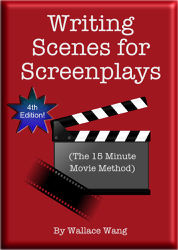In every story, there’s a dilemma. If the hero succeeds, they’ll achieve a goal but if they fail, they’ll risk wrecking their lives somehow. In “Top Gun: Maverick,” there’s a scene where the hero explains the mission the Top Gun pilots must achieve.
In this mission, the dangers are enemy anti-aircraft missiles and 5th generation fighter planes that could shoot the pilots down and kill them. If the Top Gun pilots succeed, they’ll destroy an enemy uranium enrichment facility. So the stakes boil down to this dilemma:
- Win – Destroy the enemy enrichment facility and come back alive
- Lose – Get shot down by an enemy missile or fighter
By including a scene in your story that clearly defines this dilemma facing the hero, you’ll make it clear what’s at stake for your hero. The clearer the audience knows what’s at stake, the more invested they’ll be in hoping the hero will win while fearing the worst that could happen. Watch this scene from “Top Gun: Maverick” to see how it clarifies the stakes for the hero:
In “Good Will Hunting,” the stakes are not necessarily life or death but something different. The hero is a genius and his dilemma is that he can go straight into a job using his incredible intellect, or he can take time to experience life as a normal person.
In the following scene, the hero doesn’t even appear, but his choices are represented by two professors. The math professor wants the hero to use his genius to contribute to society. The psychiatry professor wants the hero to experience life before deciding what he wants to do.
Unlike the dilemma in “Top Gun: Maverick” where the hero risks getting killed, the dilemma in “Good Will Hunting” isn’t about life or death. Instead, it’s about applying his genius or going crazy. To emphasize the hero’s choices, the math professor talks about Albert Einstein changing the world with his theories about physics. To demonstrate the danger, the psychiatry professor talks about Ted Kaczynski, a brilliant mathematics professor who became the Unabomber and killed and maimed multiple people by sending them bombs.
So the dilemma facing the hero in “Good Will Hunting” is:
- Win – Live a happy life
- Lose – Live a life of anger and depression despite being a genius
By creating a scene that clearly defines the dilemma facing the hero, you can make your story much stronger since audiences will know what’s at stake. If the hero fails, they’ll know the consequences. If the hero succeeds, they’ll know what success will look like.
Once you define the hero’s dilemma, then everything in your story must push the hero in a tug-of-war between these two ideas. Anything that doesn’t push the hero closer to either idea simply doesn’t belong in your story.
Every story is ultimately about presenting a dilemma to the hero and teasing us which way it’s going to go until the very end.
Sign up to take a FREE course about how to write scenes in a screenplay.

